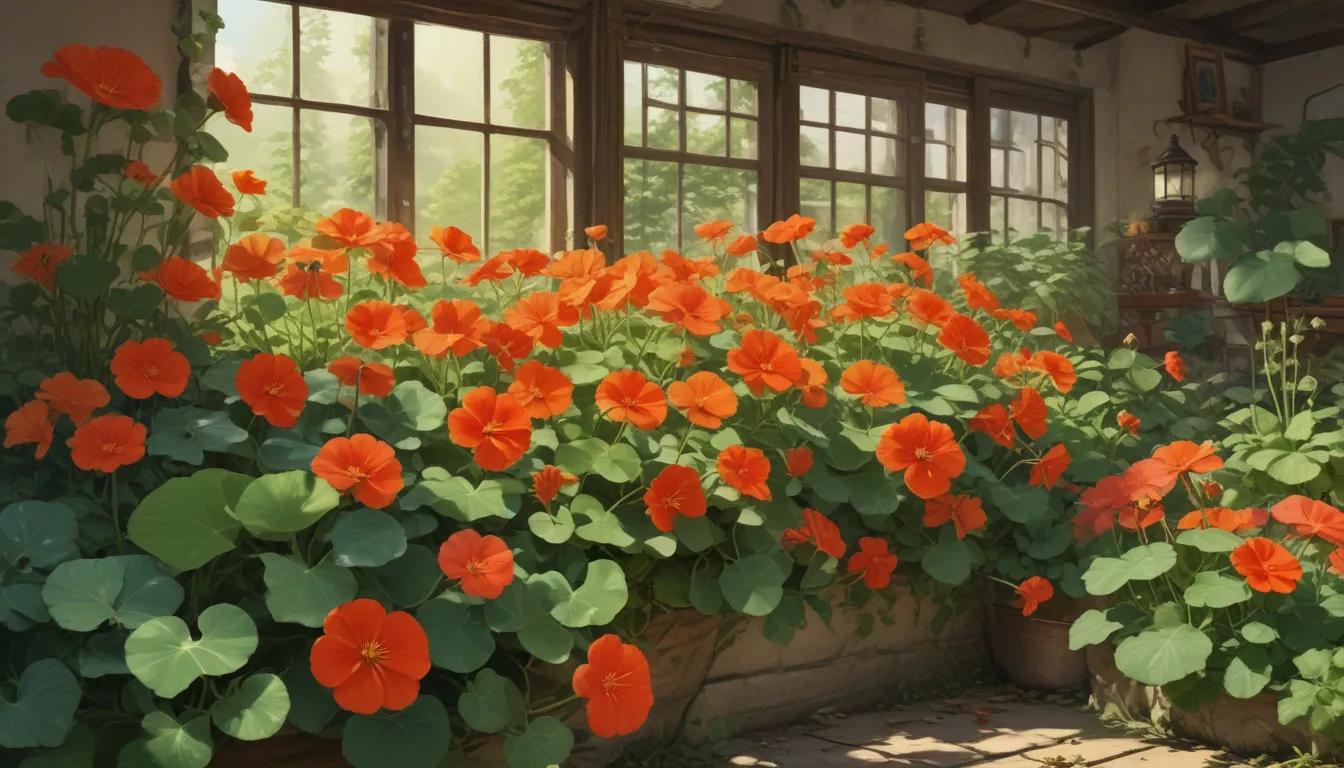How to Maximize the Benefits of Nasturtiums for Pest Control

Hey there, garden enthusiasts! Today, we’re diving into the wonderful world of nasturtiums and how they can be your secret weapon against garden pests. So grab your gardening gloves and let’s get started!
We all love a plant that does more than just look pretty, right? Nasturtiums are the perfect example of a multipurpose plant. Not only do they add beauty to your garden and an edible option to your plate, but they are also one of the most effective pest-repelling species out there. They can confuse and repel the bad guys while attracting the good bugs. It’s like having your very own army of pest control agents right in your backyard!
If you’re looking for natural solutions to keep pests at bay without relying on chemicals, then growing Tropaeolum, also known as nasturtiums, is a fantastic option to consider. These vibrant flowers are not only pleasing to the eye but also pack a powerful punch when it comes to pest control.
Here are seven common pests that nasturtiums can help you naturally control:
- Aphids
- Cabbage Loopers
- Cabbage Worms
- Colorado Potato Beetles
- Cucumber Beetles
- Flea Beetles
- Squash Bugs
Now, let’s explore how you can make the most out of your nasturtium plants to combat these pesky invaders.
1. Aphids
Aphids are known to have a strong attraction to nasturtiums. By planting these flowers strategically, you can draw aphids away from your high-value crops and redirect them to your nasturtiums instead. The good news is that nasturtiums have shown resilience against aphid infestations, so your plants are unlikely to suffer even if they become an aphid hotspot.
To maximize the effectiveness of this strategy, consider planting a border of nasturtiums around vulnerable plants like roses. This simple step can make a noticeable difference in keeping aphids at bay.
2. Cabbage Loopers
Cabbage loopers can wreak havoc on cruciferous crops like cabbages. If you find yourself battling these green leaf-feeders, consider planting nasturtiums as a natural barrier between your veggies and the pests. Interspersing nasturtiums among your vegetable rows can help deter cabbage loopers and protect your precious crops.
3. Cabbage Worms
The beautiful white butterflies that signal the arrival of summer can also bring along imported cabbage worms, threatening your brassica plants. Nasturtiums are effective at repelling these adult pests and can act as a trap crop to lure them away from your vulnerable vegetables.
4. Colorado Potato Beetles
Colorado potato beetles are easily confused by the presence of nasturtiums, making it harder for them to locate their preferred food sources. If you’re growing potatoes, having nasturtiums nearby can help reduce the population of these destructive pests.
5. Cucumber Beetles
Intercropping nasturtiums with watermelons and muskmelons has been shown to reduce cucumber beetle populations. Consider planting nasturtiums alongside other members of the Cucurbitaceae family to keep these yellow and black pests in check.
6. Flea Beetles
Like aphids, flea beetles are drawn to nasturtiums. By strategically placing these flowers near plants you want to protect, you can encourage the beetles to focus their attention elsewhere. Regularly treating your nasturtiums for flea beetles can help prevent an increase in their population.
7. Squash Bugs
Squash bugs are a common nuisance for cucurbit plants like squash and melons. Planting nasturtiums near these vines can deter squash bugs and protect your harvest. Remember to use the edible flowers of nasturtiums as a flavorful addition to your dishes once your fruits are ready for harvest.
Nasturtiums not only repel pests but also attract beneficial insects like hoverflies and beneficial wasps, which can help keep your garden ecosystem in balance. These critters act as natural predators for a variety of bad bugs, creating a harmonious environment where pests are kept in check.
So, how do you plan to harness the power of nasturtiums in your garden? Are you leaning towards trap cropping, repelling pests, or a bit of both? Share your thoughts with us in the comments below!
If you’re eager to learn more about the wonders of nasturtiums, check out our other guides:
- How to Plant and Grow Nasturtium Flowers
- 15 of the Best Nasturtium Varieties
- How to Care for Nasturtiums in Winter
With nasturtiums by your side, you’ll be well-equipped to tackle garden pests naturally and embrace the beauty and benefits of these versatile plants. Happy gardening!





